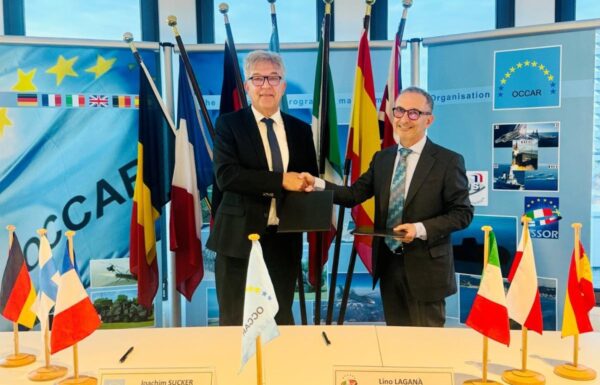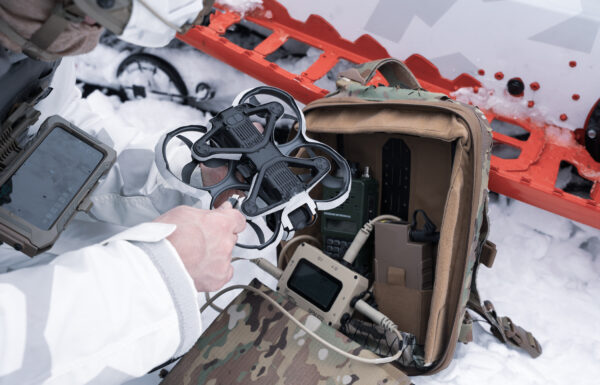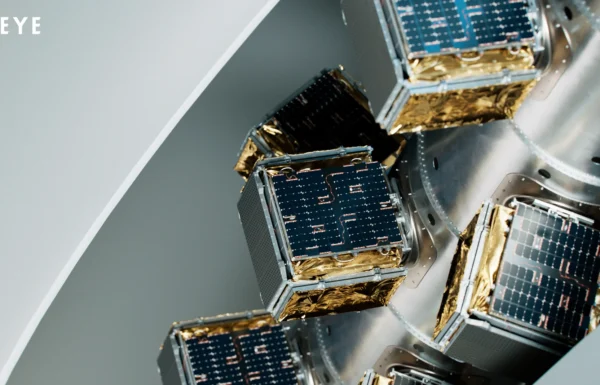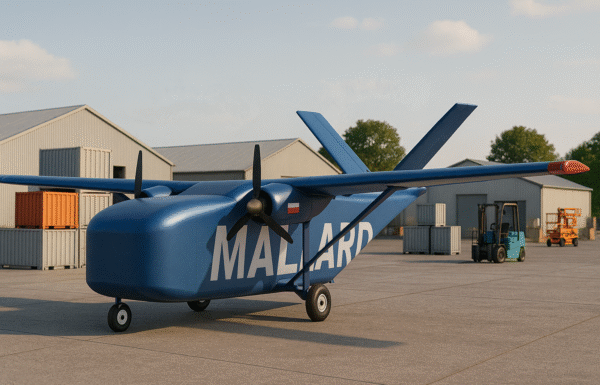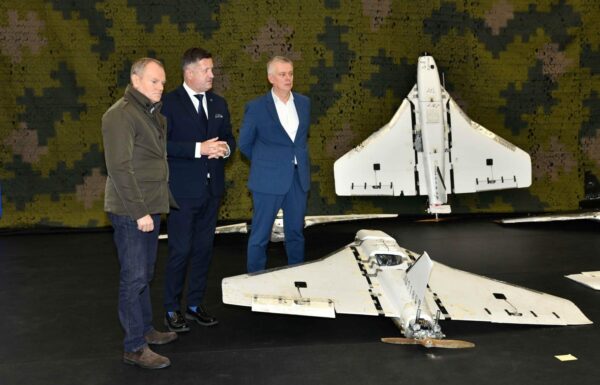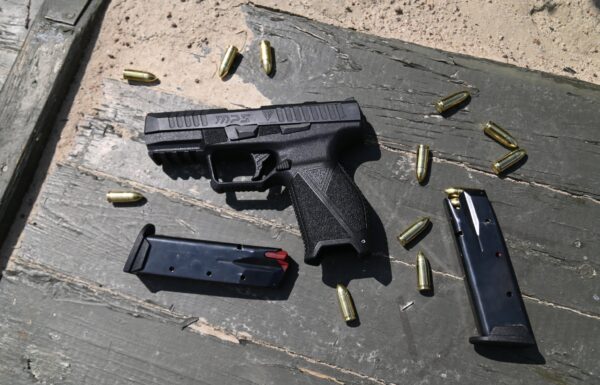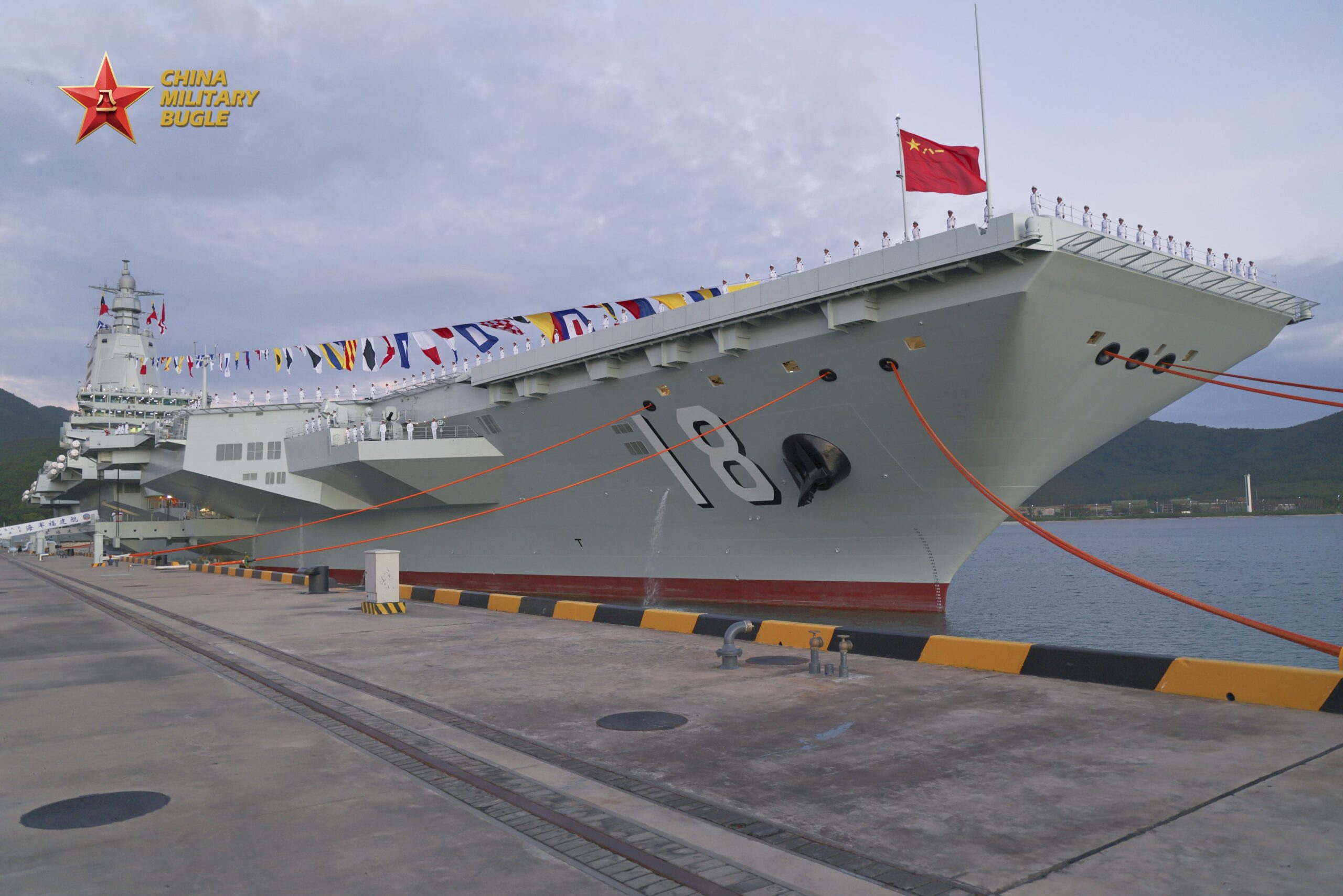On Friday, 7 November 2025, the Chinese newspaper China Daily reported that two days earlier, a ceremony had been held at the Sanya naval base on Hainan, attended by Chinese President Xi Jinping, to mark the commissioning of the Type 003 aircraft carrier, CNS Fujian (CV-18), into operational service. It is the third vessel of this class in the People’s Liberation Army Navy (PLAN).
Although reports about the ceremony appeared on social media the same day, as it was held with great pomp and ceremony, official photographs and video footage were released by state media only today.
Approximately 2,000 representatives of the Navy and institutions involved in the construction of the aircraft carrier, including the main contractor, China State Shipbuilding Corporation (CSSC), took part in Wednesday’s ceremony. During the event, Xi Jinping presented the flag of the People’s Liberation Army to the Fujian’s captain and political commissar, followed by a group photo session.
On board the vessel, Xi Jinping was briefed on the development of China’s aircraft carriers, their combat capabilities, and the electromagnetic catapult system. The carrier-based aircraft were also presented, including the fifth-generation multirole Shenyang J-35, the J-15T (a variant of the J-15B adapted for an electromagnetic catapult, unveiled in 2018), and the KongJing-600 (KJ-600) airborne early warning aircraft.
It should be noted that work on the Fujian likely began in February 2015. The first steel cutting took place in February 2016, and the keel was laid in March 2017. Construction was later paused while engineers tested two launch systems – a steam catapult and a domestically developed electromagnetic catapult – with the latter ultimately chosen. The assembly of the main hull blocks began in May 2020, and by July, the hull was moved into Dry Dock No. 3. By September, all bottom hull sections, except for the bow bulb, had been installed.
Fujian was launched on 17 June 2022 and began sea trials on 1 May 2024. The final stage of testing took place between 10 and 30 September 2025, when the ship departed Shanghai. By the end of September, it had berthed in Sanya, near the Type 002 carrier CNS Shandong (CV-17). On 3 October, however, both ships put to sea due to Typhoon Wanmo. They later returned to port, and preparations for the commissioning ceremony were observed in early November.
According to the information released, the Type 003 aircraft carrier CNS Fujian (CV-18) has an overall length of 316 meters (flight deck) and a waterline length of 300 meters. The flight deck width measures 76 meters, while the beam at the waterline is 39.5 meters. The vessel has a standard displacement of 71,875 tons, with a full-load displacement estimated at 80,000–85,000 tons. Propulsion is provided by steam boilers integrated with electric drive systems.
According to Western and Japanese defense analysts, the carrier is expected to embark an air wing of more than 50 aircraft and helicopters. It is described as the first non-U.S. supercarrier, although smaller than its American counterparts. It is also emphasized that the Fujian is the largest and most technologically advanced warship ever built in China.
Although analysts point out certain limitations, namely the reduced deck space, which means that flight operations cannot be conducted on all three catapults simultaneously (as electromagnetic catapults take up more room than steam-powered ones), it was reportedly Xi Jinping who supported this solution, along with Vice Admiral Ma Weiming, the project’s lead engineer and a key advocate of the technology.
福建はカタパルトと着陸路の重なりの都合上、同時発着艦が出来ないとする記事。大型のJ-15が着艦時には停止するのは滑走路端となる為だという。これは蒸気式から電磁式への設計変更の際にカタパルト長が30m延長されたことに起因する。
なるほどそういう見方もあるのね。https://t.co/LnAQ3I9gAa pic.twitter.com/8esldo8hiV
— Cypher1778 @C106(日)-東キ62ab (@Laurus_nobilis0) October 14, 2025
According to available information, the air wing may comprise 24 Shenyang J-15 multirole fighters, 4 J-15D electronic warfare aircraft, 12 next-generation J-35 fighters, 8 Changhe Z-18 transport helicopters, 4 Harbin Z-9 multirole helicopters, and 4 Xi’an KJ-600 airborne early warning aircraft. An interesting development is the new carrier-based advanced jet trainer JL-10J, a mock-up of which (along with several of the aforementioned aircraft) was spotted on the Fujian’s deck earlier this year. It appears to have been developed following the failure of the carrier-based JL-9 program.
In addition to the Shandong (315 meters in length, 58,600 tons standard displacement, and around 70,000 tons full load), China currently also operates the Type 001 CNS Liaoning (CV-16), measuring 304.5 meters in length, with a standard displacement of 54,500 tons and a full-load displacement of 67,500 tons.
— China Military Bugle (@ChinaMilBugle) November 7, 2025
— China Military Bugle (@ChinaMilBugle) November 7, 2025
Satellite images on November 6 showed that the Chinese Navy’s third aircraft carrier Fujian (CV-18) has successfully joined the Chinese Navy. There are still carrier-based aircraft on the deck. The Chinese leader’s special plane has left. The service was completed yesterday. pic.twitter.com/42DpE58ELe
— CHINA PLA🇺🇸🇨🇳 (@CHINAPLA1) November 6, 2025
CV-18 is a bit longer than CV-17/16, but not hugely.
At 316m, it's shorter than Kitty Hawk (326m) or Ford classes (333m), but fits EM catapults of similar length to EMALS or C-13 cats.Steel is cheap, air is free — but hull size is dictated by things like propulsion too.
1/ pic.twitter.com/CdO58qZmFY— Rick Joe (@RickJoe_PLA) October 4, 2025
In February of this year, reports emerged suggesting that construction of China’s fourth aircraft carrier, the Type 004, may have begun. The vessel is also expected to feature an electromagnetic catapult system, but it will reportedly be even larger than the Fujian and powered by a nuclear propulsion system. Experts estimate that it could displace up to 110,000 tons, exceeding even the U.S. Navy’s Nimitz– and Ford-class supercarriers. According to various sources, China aims to operate at least six aircraft carriers by 2035. The country already possesses the world’s largest navy by number of ships, surpassing the United States, although its vessels remain smaller and generally less capable than those of the U.S. Navy.
Meanwhile, new information surfaced in mid-October.
🇨🇳𝐓𝐲𝐩𝐞 𝟎𝟎𝟒 𝐍𝐮𝐜𝐥𝐞𝐚𝐫 𝐀𝐢𝐫𝐜𝐫𝐚𝐟𝐭 𝐂𝐚𝐫𝐫𝐢𝐞𝐫 starting to take shape in Dalian shipyard!
It’s unconfirmed but the possibilities are high, as suspected parts of the carrier is just beside the 400+ meter dry dock pic.twitter.com/xtiXmBhlzC
— PLA Military Updates (@PLA_MilitaryUpd) October 15, 2025
Updated images of the reconstructed land carrier mock-up in Wuhan, China. This should resemble in some way China’s next aircraft carrier. Note the further aft positioning of the new island superstructure compared with the previous setup of the carrier mock-up, and the island’s… pic.twitter.com/wRHPeMt7Um
— Eurasia Naval Insight (@EurasiaNaval) October 15, 2025







